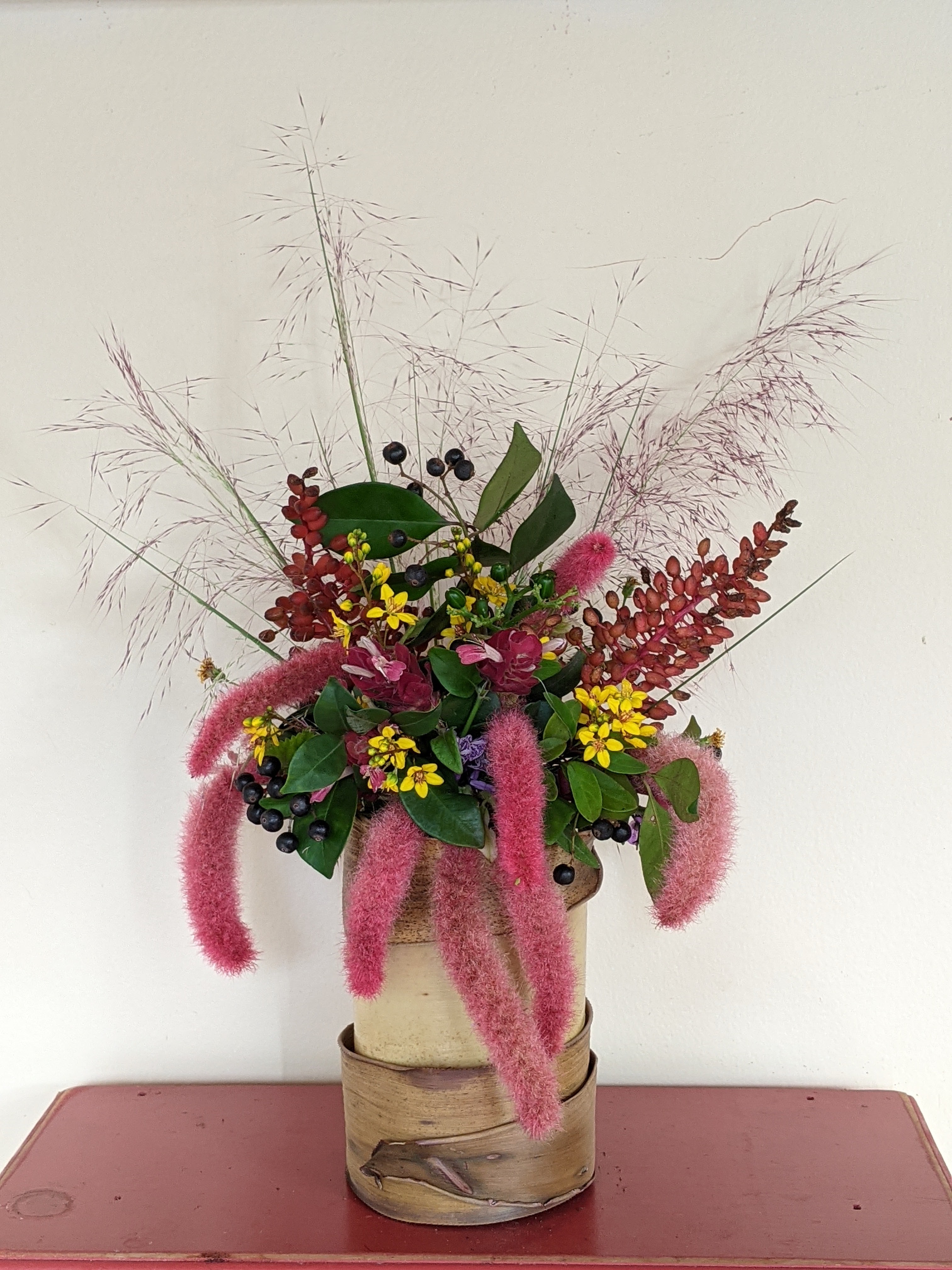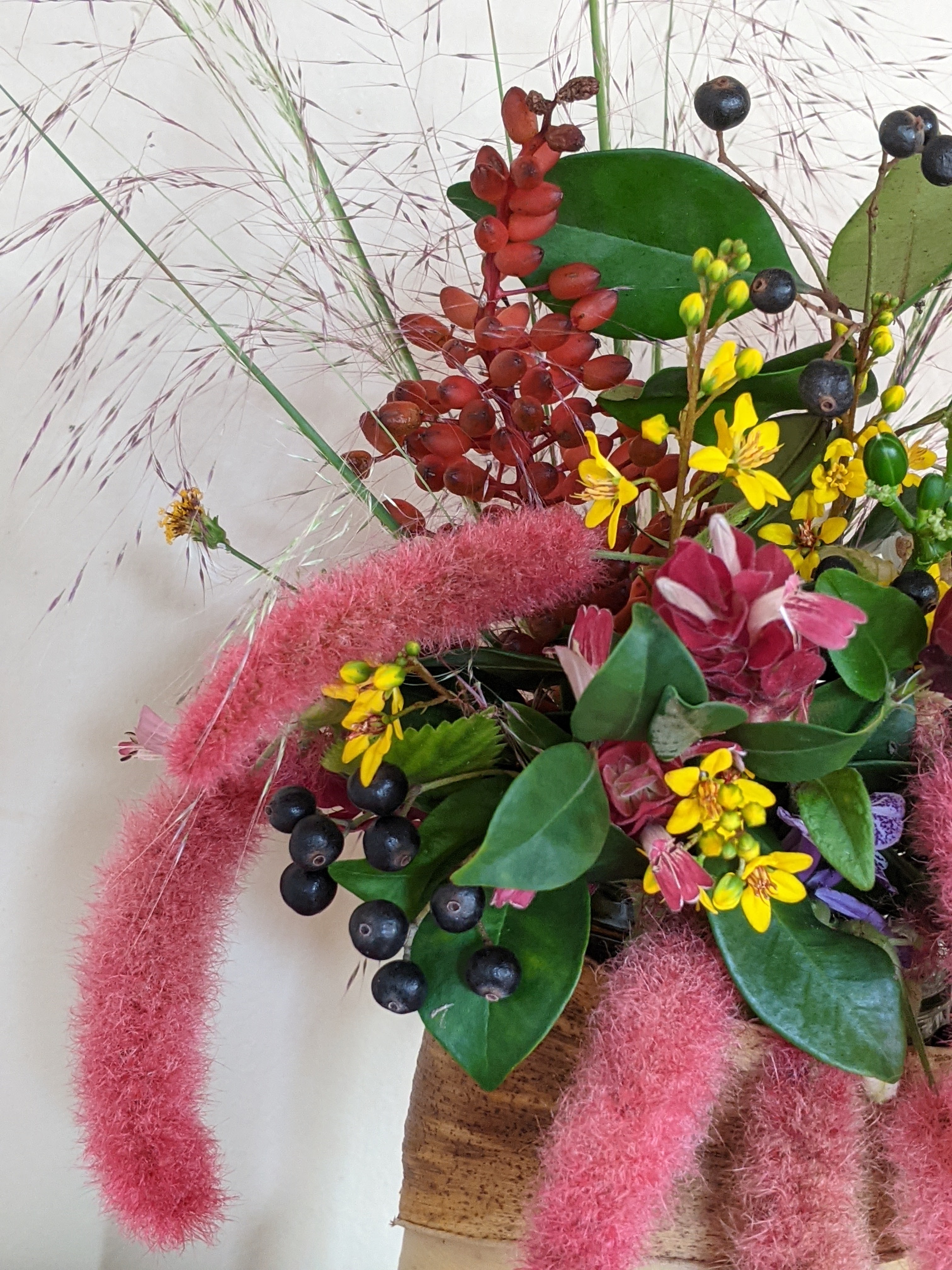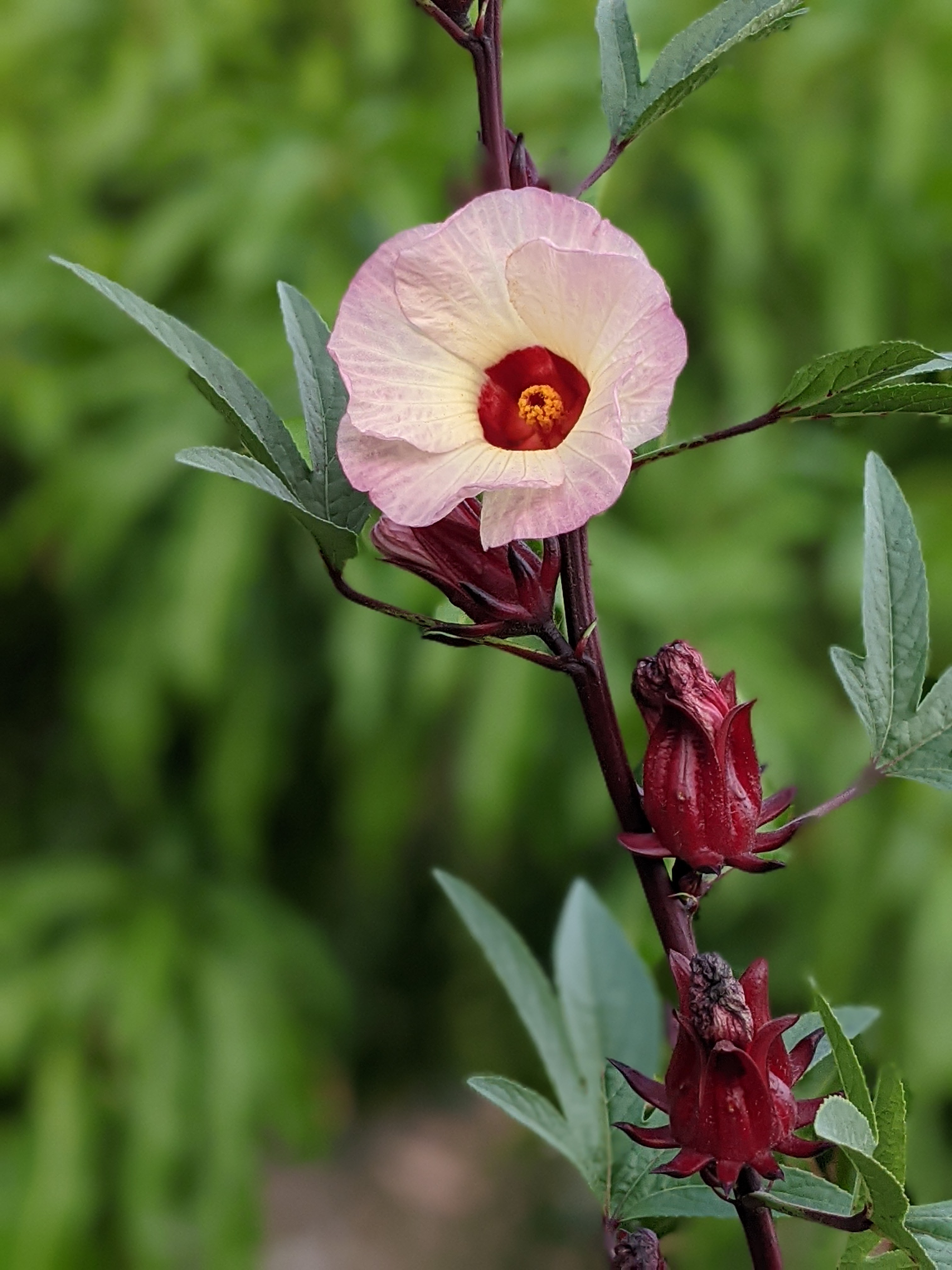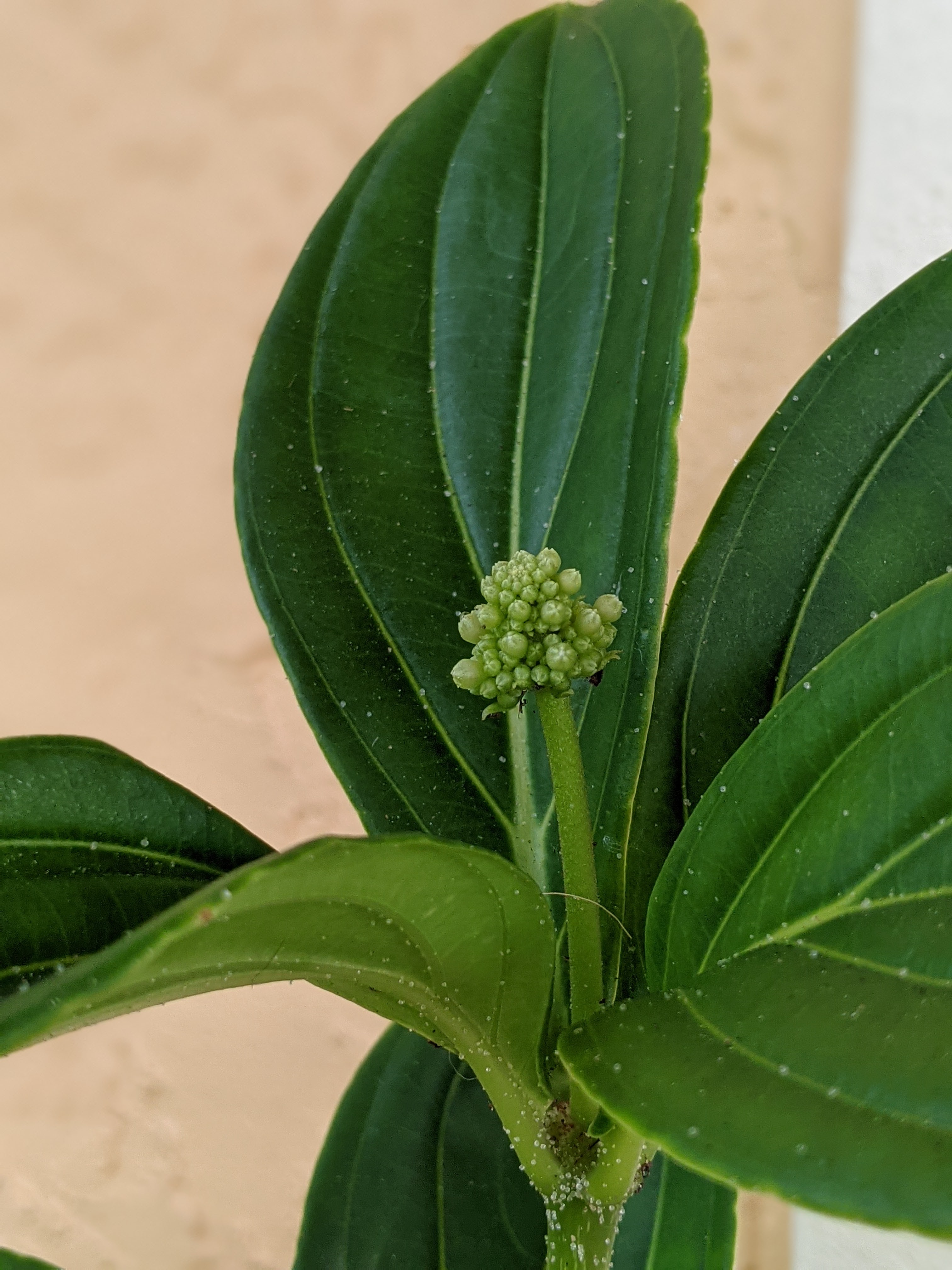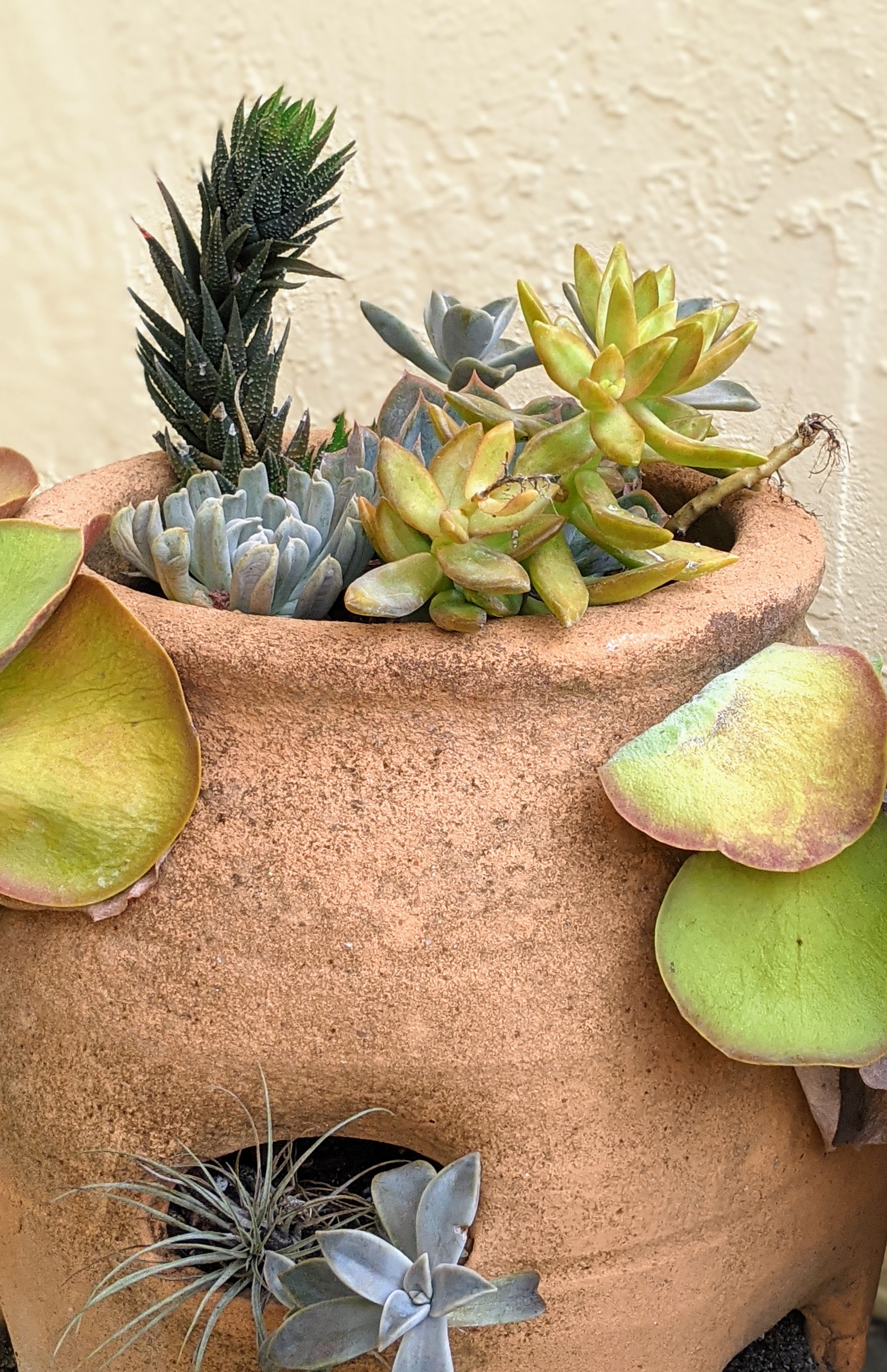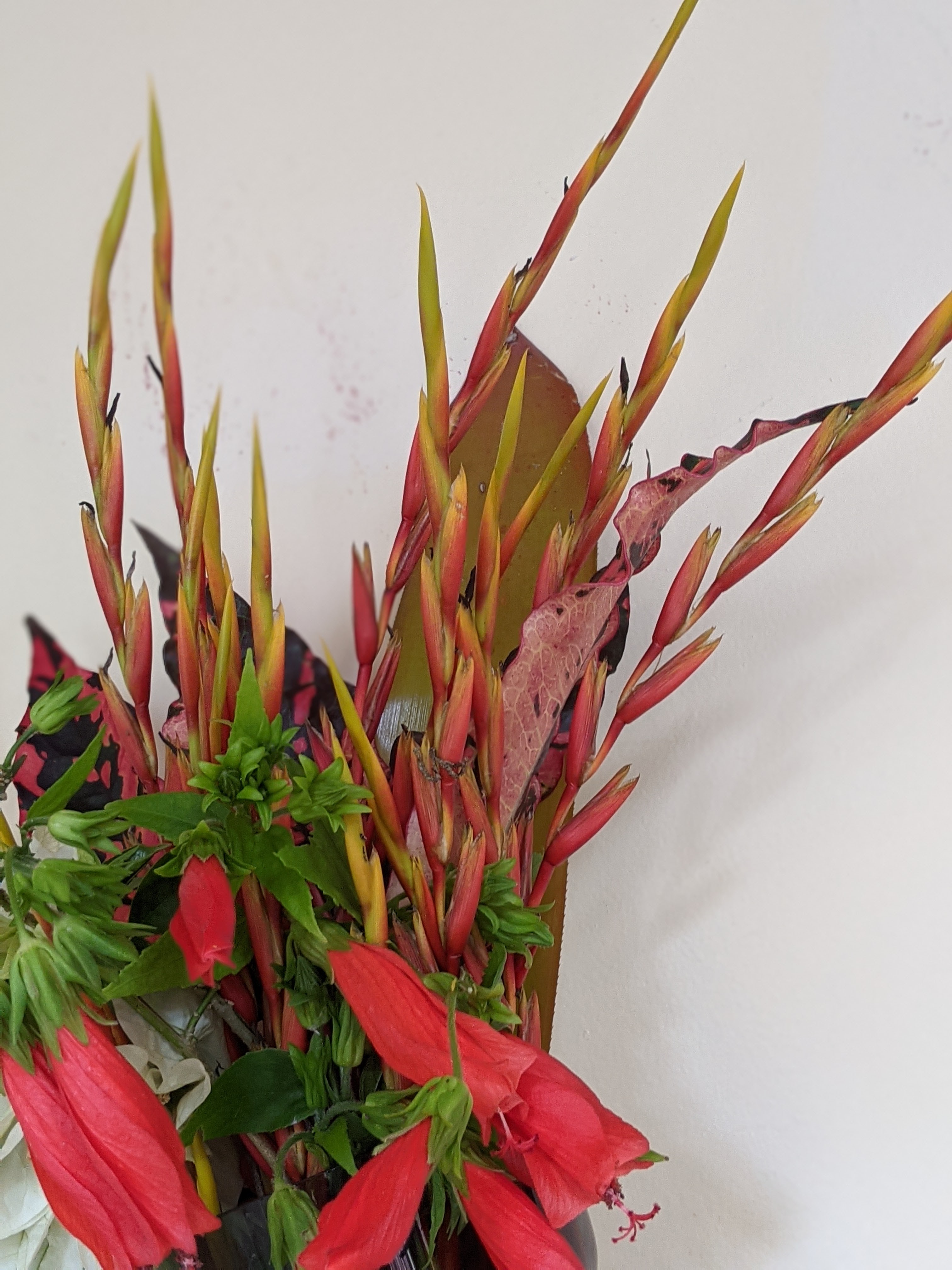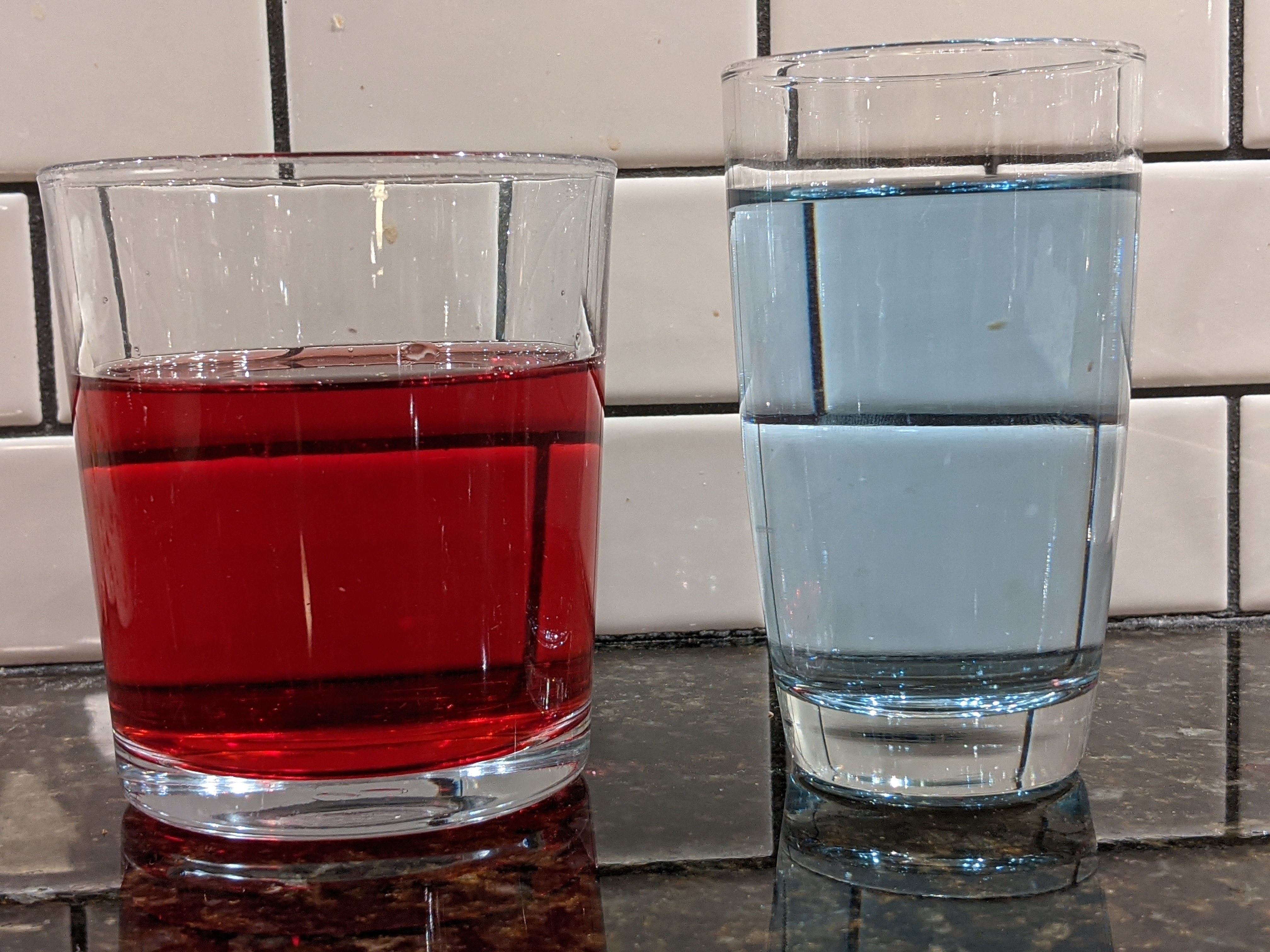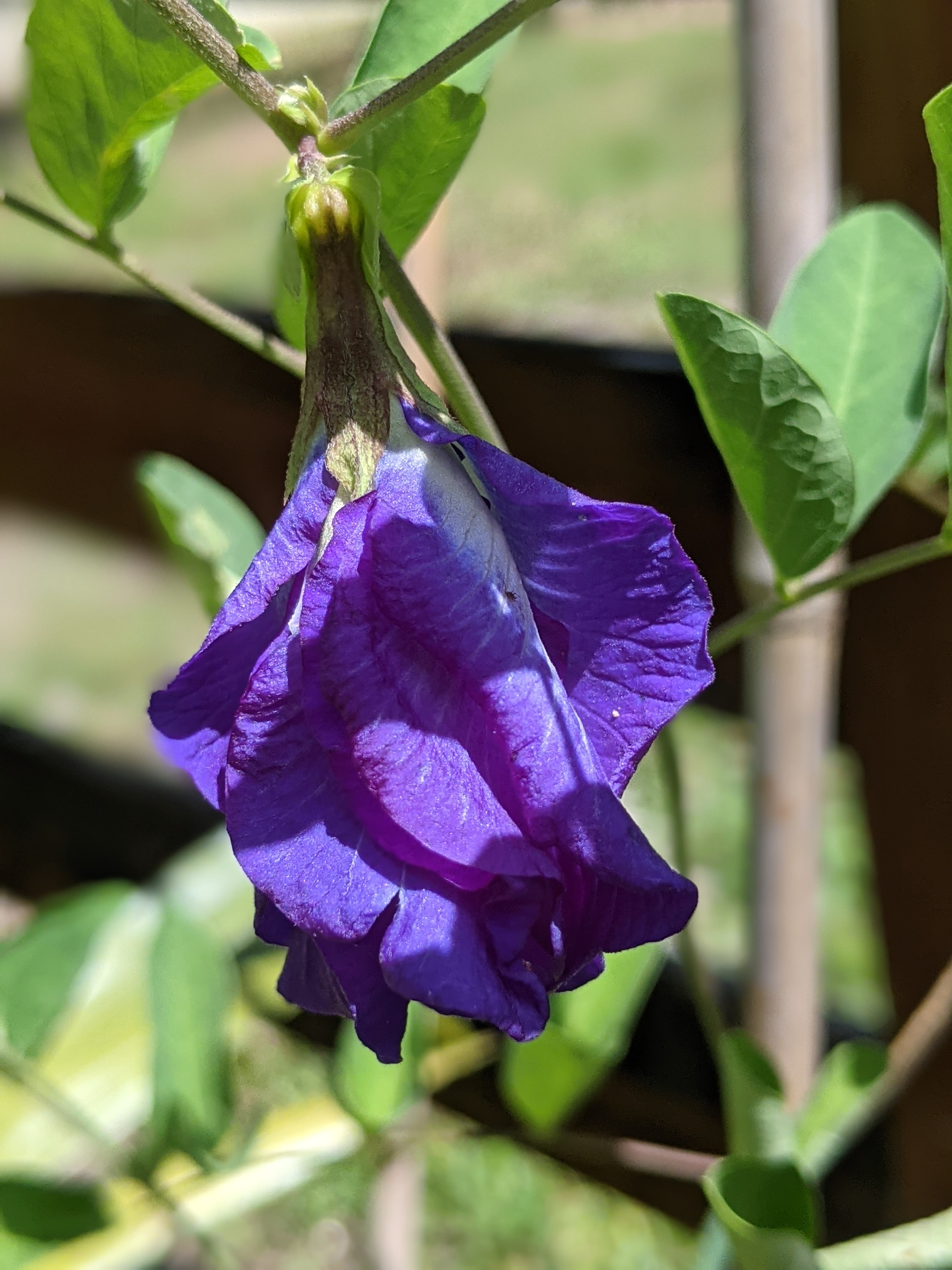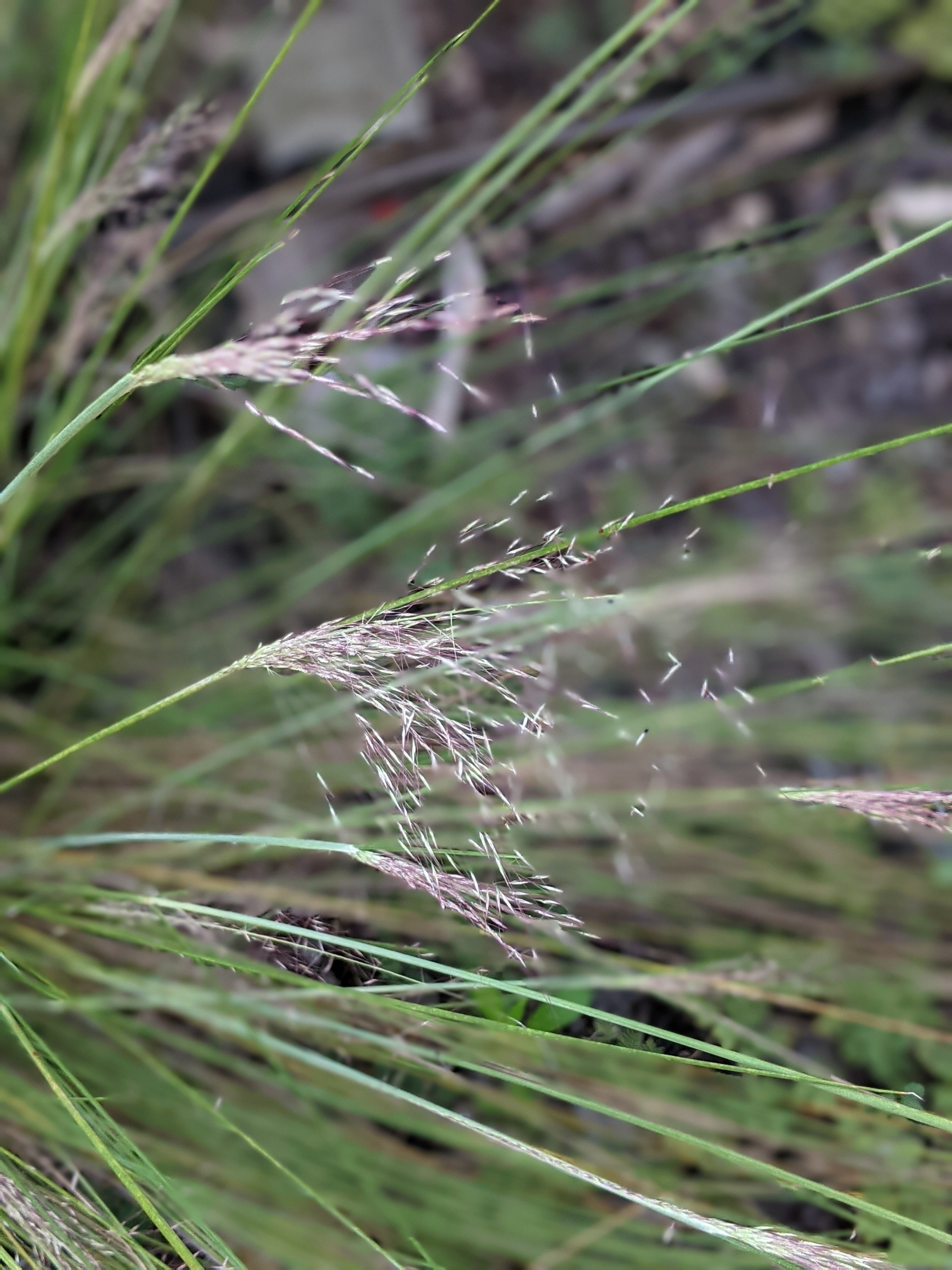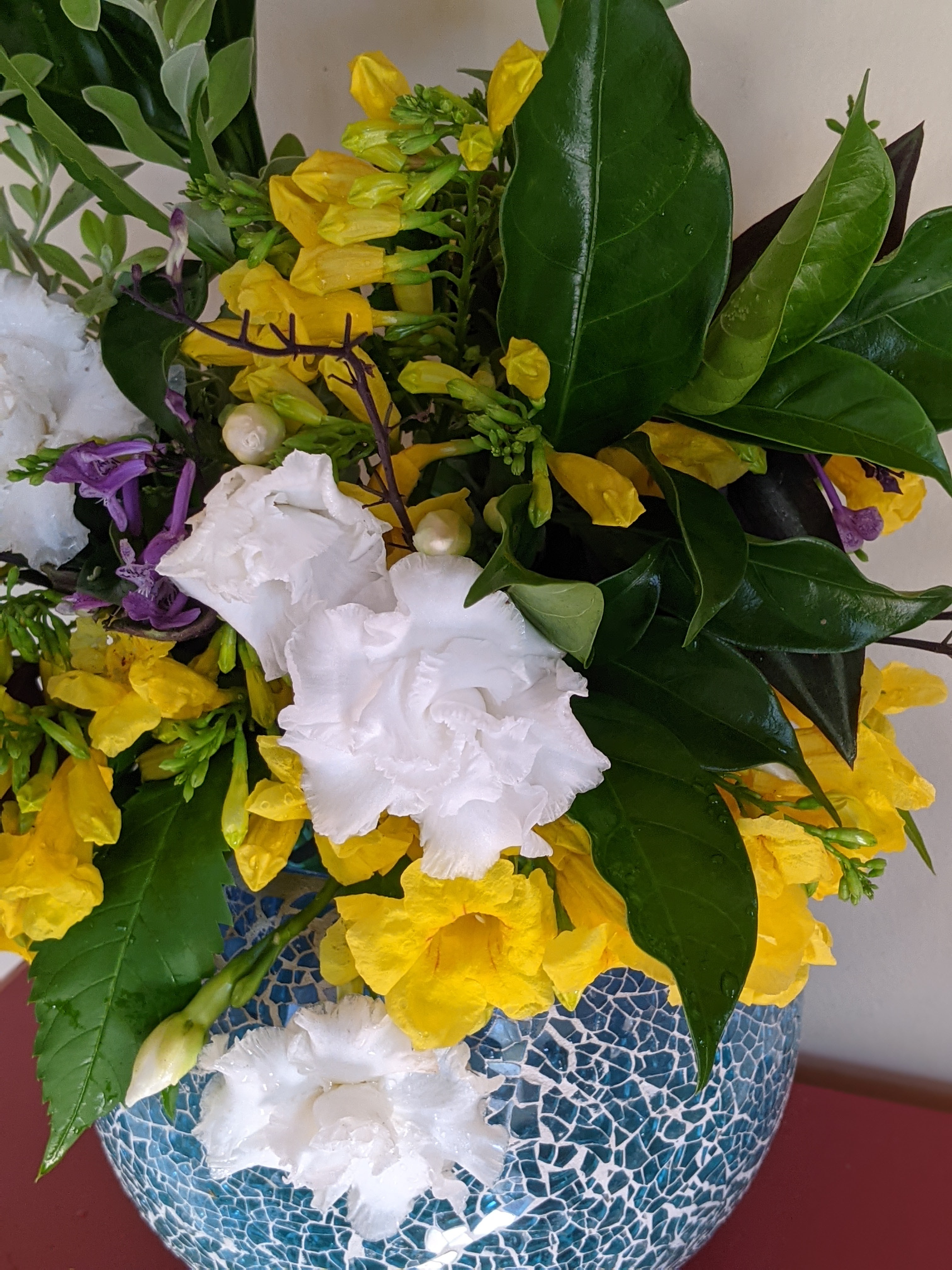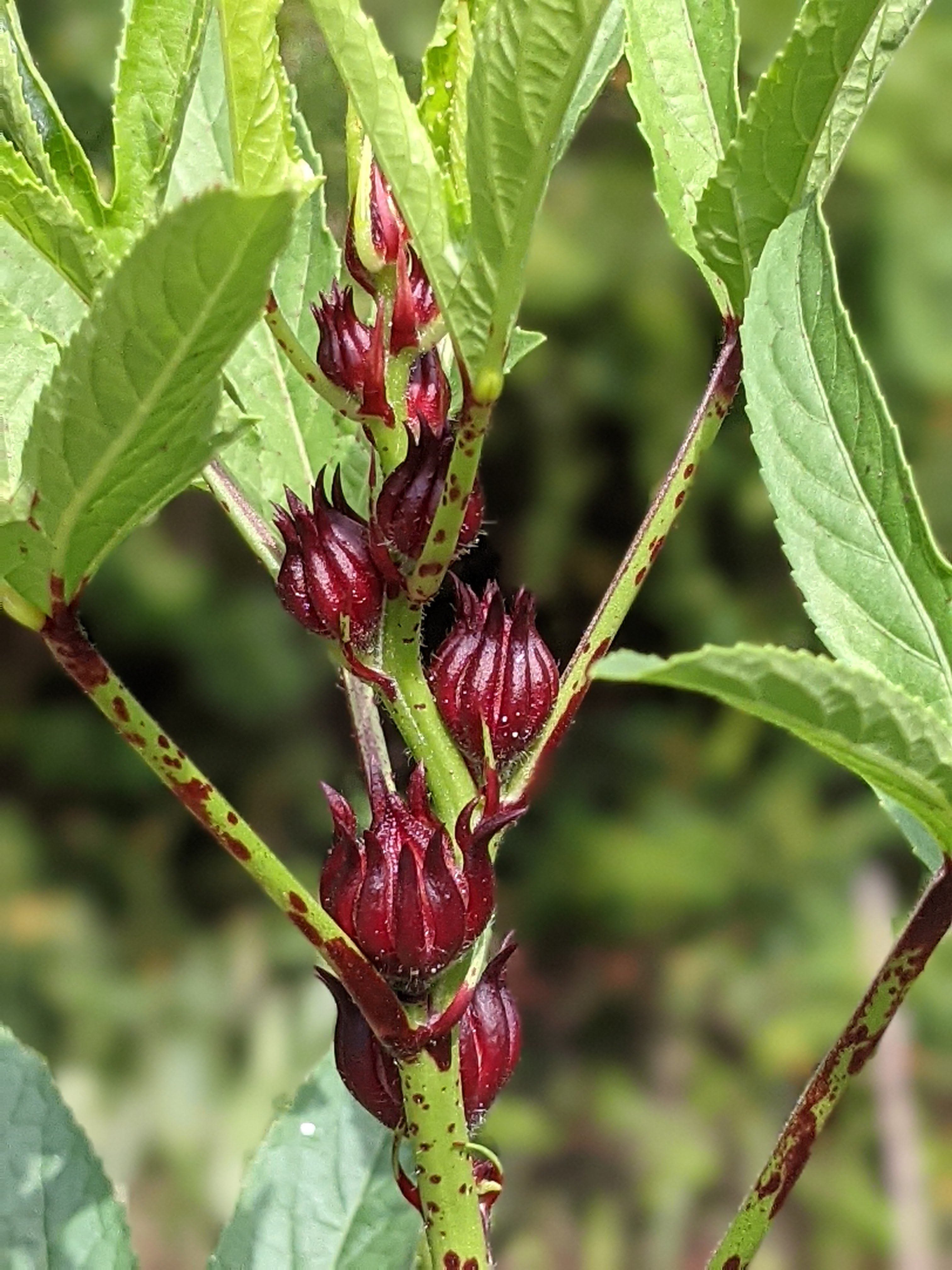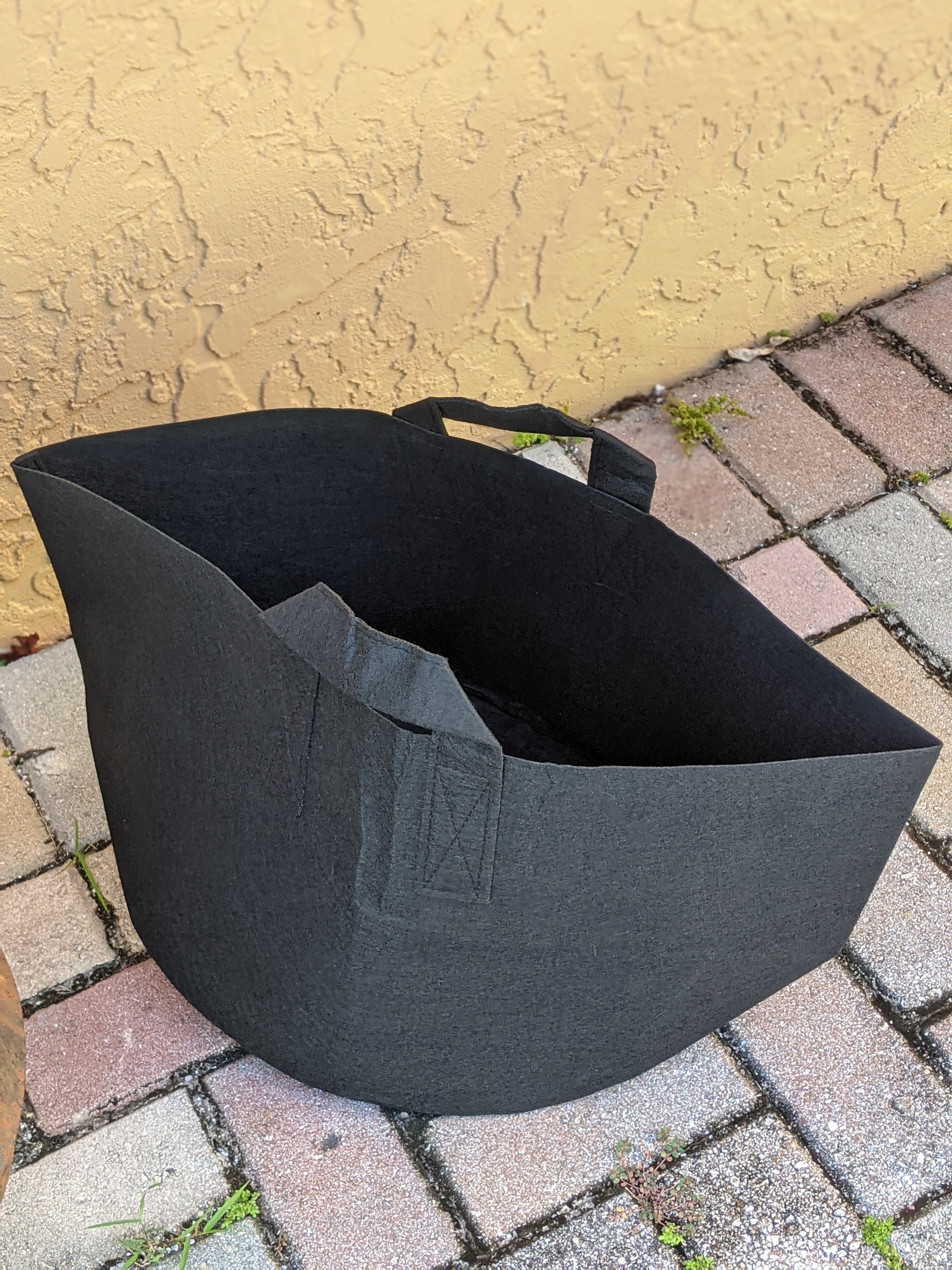November is usually a glorious weather month in South Florida. The past few days have been cold and rainy, which is odd. Temperatures have been in the 60s (F)/15(C). We are cold, my greyhounds are covered in a film of sand and so are the floors. The dogs have enjoyed racing in the cool weather. The garden soaked up the rain and provided some bounty for the gardener.

New to the garden this year and the first time I have seen the flower – Medinilla cummingii. Chandelier tree is its common name and a very apt description of the plant. It has numerous buds and I am waiting for the full flowering. Should be spectacular. These are similar to orchids, ocurring naturally growing in trees somewhere in the South Pacific. It must be a fabulous forest. This one is shares a pot with Dwarf Chenille Plant on my front porch.
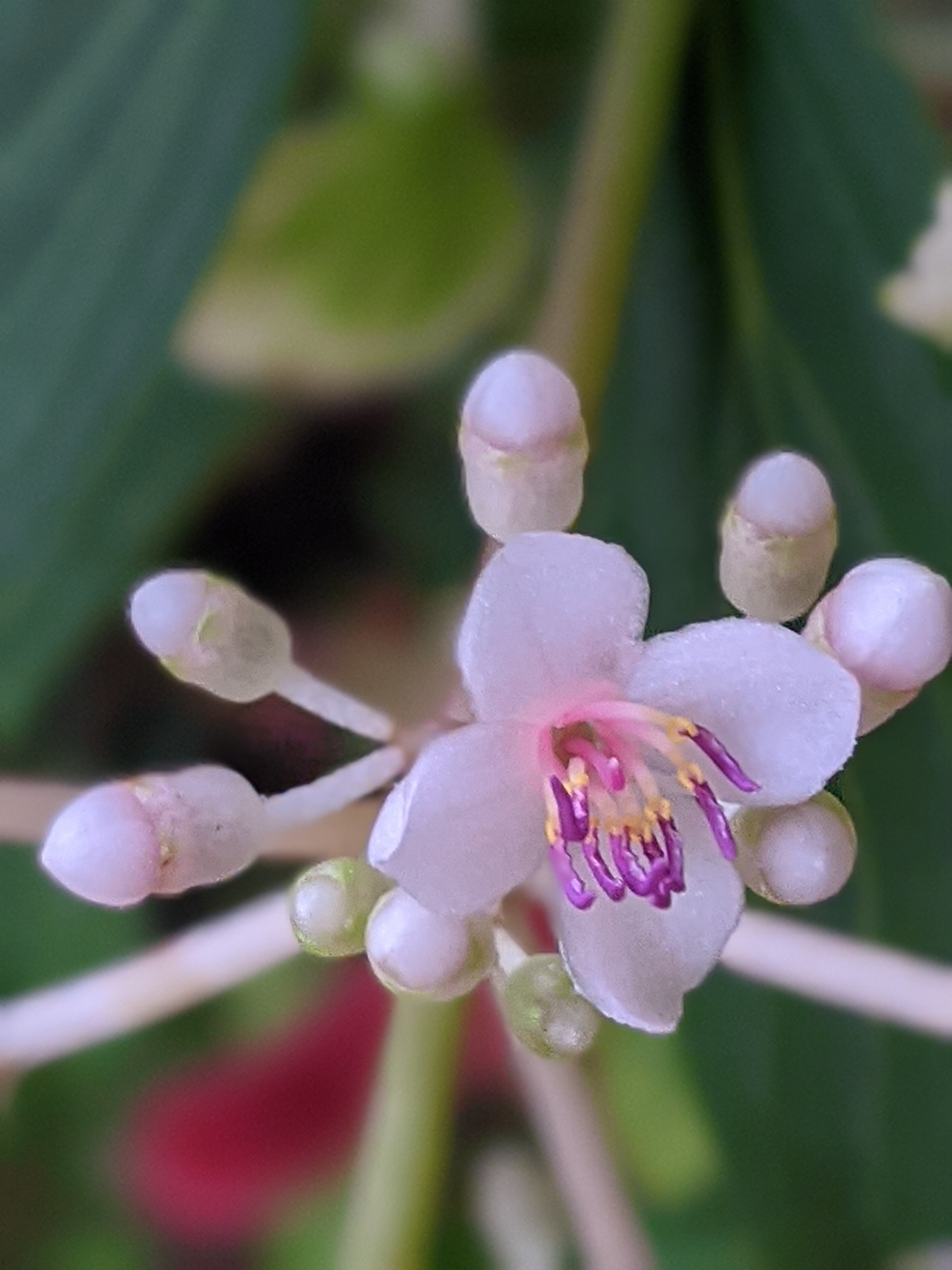
A closer view of the flower.

I started seeds earlier this year (September) and have my first bud on the Cactus Zinnias.
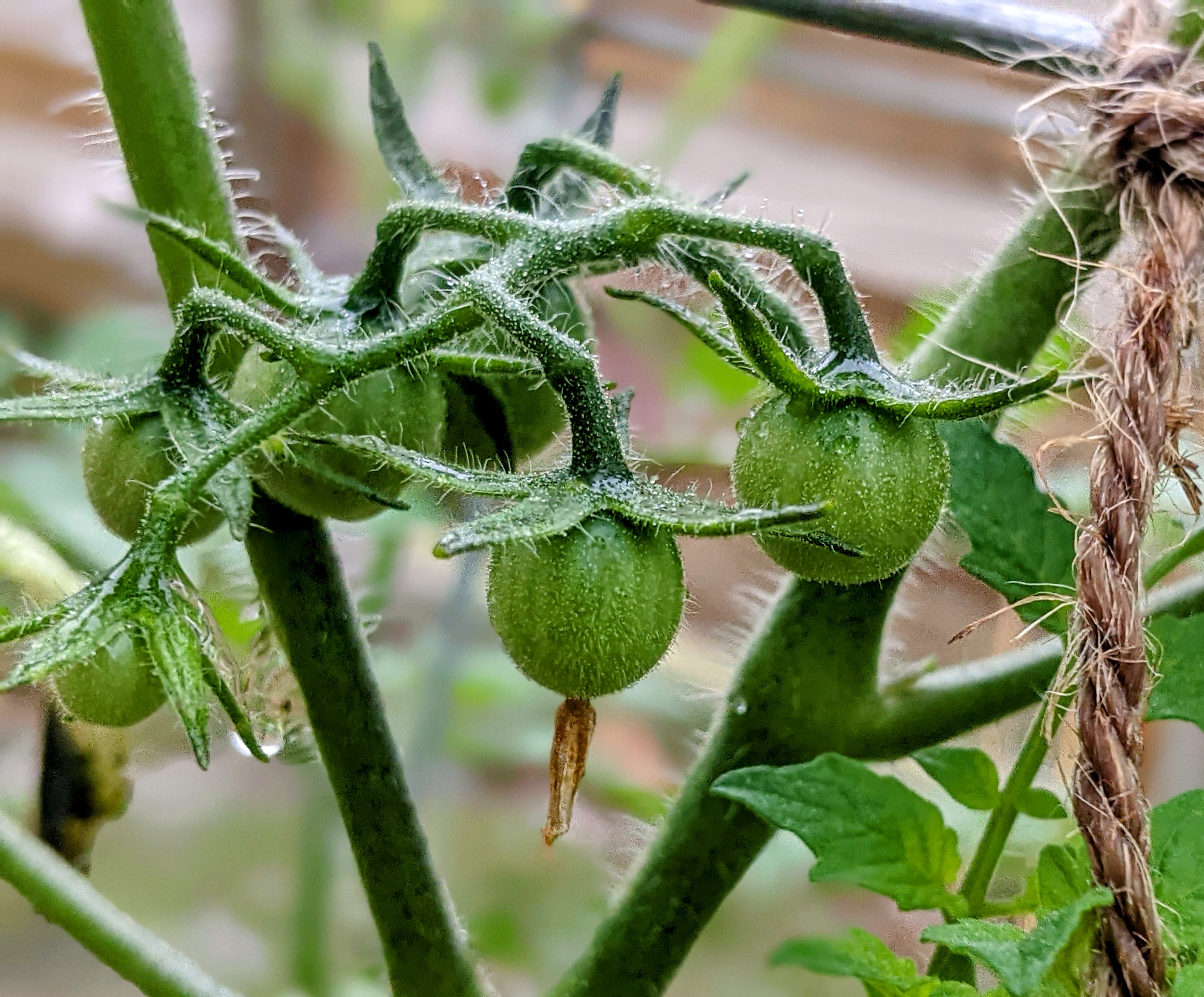
Tomato seeds were started at the same time in early September. I planted Yellow Pear and Sweet 100 cherry tomatoes, these look like neither, but I hope to eat some next week.

I espaliered the red flowering Nodding Hibiscus shrub to my neighbor’s fence – very pleased with how it is turning out.
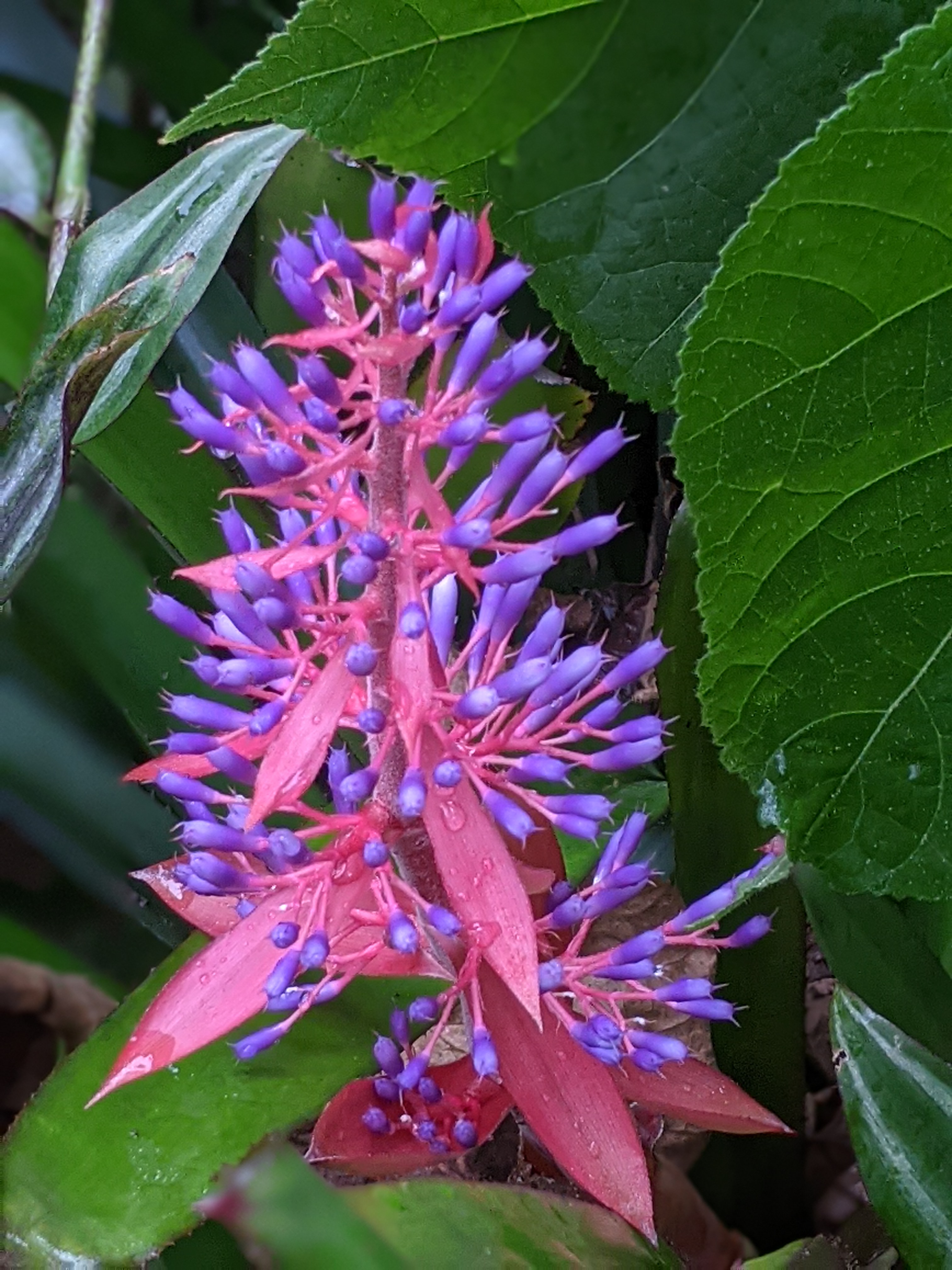
A favorite winter flower – Portea ‘Candy’ Bromeliad. These flowers last a long time and then produce an interesting seedhead. Such mad cool flowers.
There, my Six for this Saturday. To see other SOS posts, visit http://www.thepropagatorblog.wordpress.com.
Happy Gardening!!











